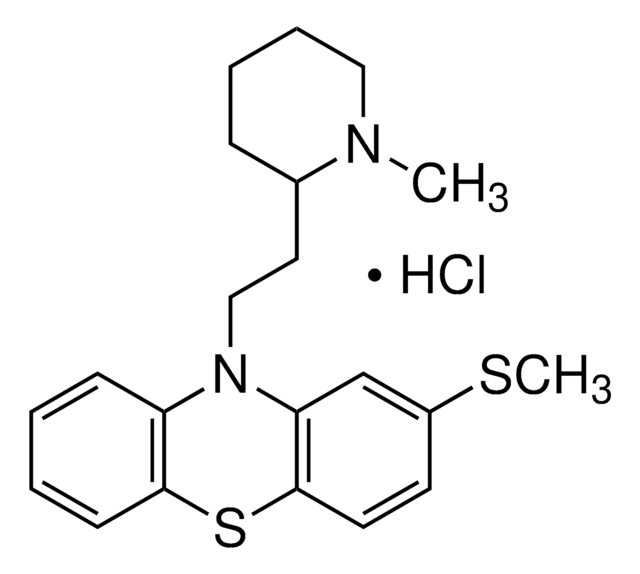おすすめの製品
グレード
pharmaceutical primary standard
APIファミリー
methylphenidate
メーカー/製品名
EDQM
薬剤管理
regulated under CDSA - not available from Sigma-Aldrich Canada; psicótropo (Spain); Decreto Lei 15/93: Tabela IIB (Portugal)
アプリケーション
pharmaceutical (small molecule)
フォーマット
neat
保管温度
2-8°C
SMILES記法
Cl[H].COC(=O)C(C1CCCCN1)c2ccccc2
InChI
1S/C14H19NO2.ClH/c1-17-14(16)13(11-7-3-2-4-8-11)12-9-5-6-10-15-12;/h2-4,7-8,12-13,15H,5-6,9-10H2,1H3;1H
InChI Key
JUMYIBMBTDDLNG-UHFFFAOYSA-N
遺伝子情報
human ... SLC6A2(6530) , SLC6A3(6531)
類似した製品をお探しですか? 訪問 製品比較ガイド
詳細
アプリケーション
包装
その他情報
関連製品
シグナルワード
Warning
危険有害性情報
危険有害性の分類
Acute Tox. 4 Oral
保管分類コード
11 - Combustible Solids
WGK
WGK 3
引火点(°F)
Not applicable
引火点(℃)
Not applicable
適用法令
試験研究用途を考慮した関連法令を主に挙げております。化学物質以外については、一部の情報のみ提供しています。 製品を安全かつ合法的に使用することは、使用者の義務です。最新情報により修正される場合があります。WEBの反映には時間を要することがあるため、適宜SDSをご参照ください。
Jan Code
Y0001017-1EA:
Y0001017:
Choose from one of the most recent versions:
試験成績書(COA)
Sorry, we don't have COAs for this product available online at this time.
If you need assistance, please contact カスタマーサポート
ライフサイエンス、有機合成、材料科学、クロマトグラフィー、分析など、あらゆる分野の研究に経験のあるメンバーがおります。.
製品に関するお問い合わせはこちら(テクニカルサービス)





